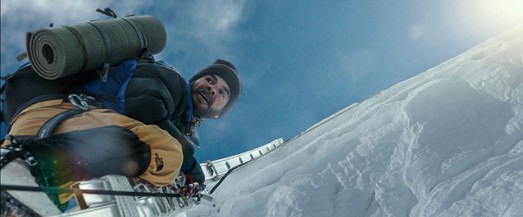|
|
Movie Review: EverestBy Ben GruchowSeptember 30, 2015
We do know that four of Hall’s 11-member expedition did not survive the Everest descent because of two main factors, both of which the movie depicts consequentially: catastrophic lack of planning (there were some 30-odd climbers on that day, one of the few out of the year where summiting Everest isn’t a lethal proposition, where nobody had the foresight to agree on a course of action that would lead everyone to the top and back in enough time) and a freak blizzard that hit the climbers roughly three hours into their descent. None of this is news, and the movie doesn’t treat it as such; we are left with the characterizations of nearly 20 individuals (the climbers, plus the people at Base One, plus assorted family members back home), each of whom are assigned one or two personality traits and guided to filter their actions through those traits. This is set against the backdrop of an absolutely standard disaster-movie timeline: we get our introductions, a conversation where the nature of the hazard is explained, some character grace notes, early warning signs (in the first of the delays encountered, there were no guide ropes laid across some of the most treacherous terrain of the ascent; this would be irritatingly convenient in a fictional narrative, but it really did happen and was one of the initial events preceding the disaster), and there’s even some moments of ruinous bravado - where the smart thing to do would be turn around and leave and not invite crisis, but the characters are too caught up in making the right symbolic choice to use their brains in the moment. Of course, one of the big symptoms of altitude sickness is impediment to brain function, so this could legitimately be a catalyst for the events of the descent as well.
|

|
|
|

|
Thursday, October 31, 2024
© 2024 Box Office Prophets, a division of One Of Us, Inc.


